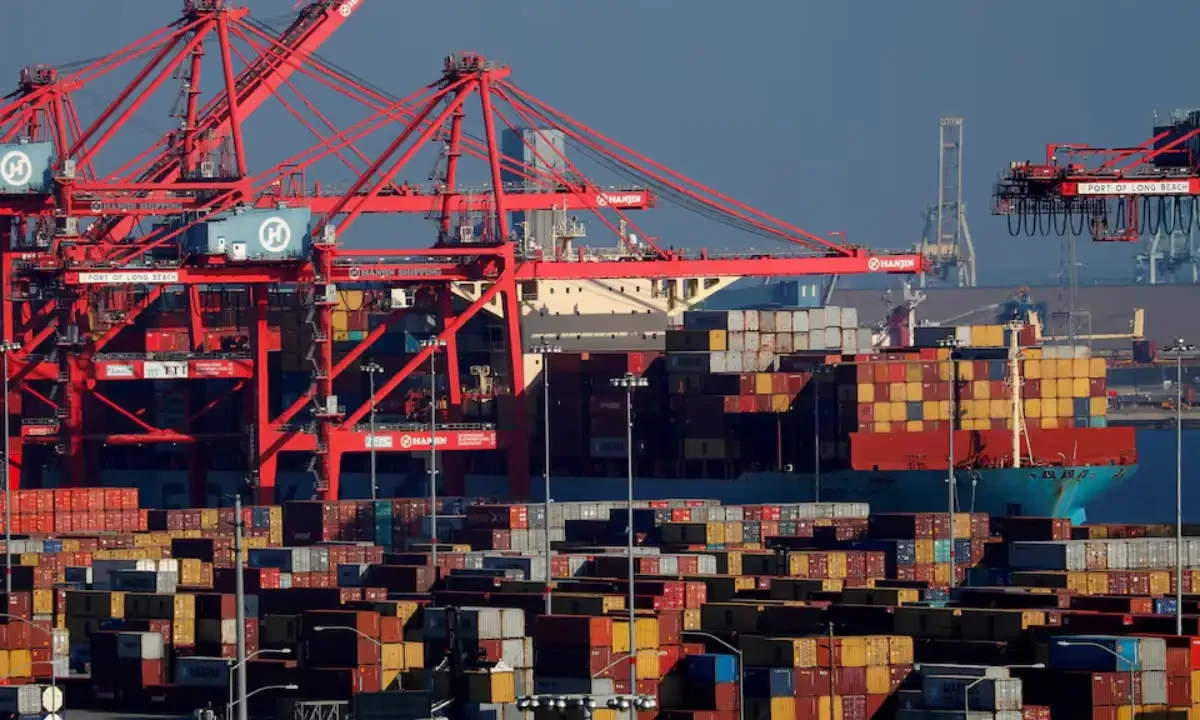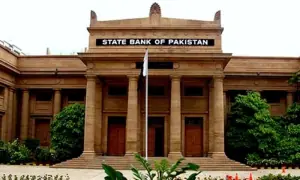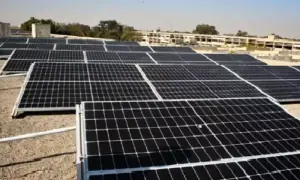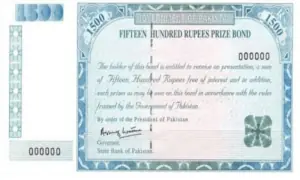UN projects Pakistan’s economy to grow by 2.3% in 2025 amid continuing fiscal reforms
Pakistan is expected to experience “moderate growth, stabilizing after a period of economic contraction”, with its Gross Domestic Product (GDP) projected to expand by 2.3% in 2025, according to a major United Nations report.
The report, titled ‘The UN World Economic Situation and Prospects 2025’, noted that declining inflation has allowed most of the South Asian region’s central banks to commence or continue monetary easing in 2025.
Meanwhile, governments in Pakistan, Bangladesh and Sri Lanka are expected to continue fiscal consolidation and economic reforms under IMF-supported programmes.
It said that the near-term outlook for South Asia is expected to remain robust, with growth projected at 5.7% in 2025 and 6.0% in 2026, “driven by strong performance in India as well as economic recovery in a few other economies”, including Bhutan, Nepal, and Sri Lanka.
The report said the global economy is at a precarious juncture, marked by heightened trade tensions and elevated policy uncertainty.
The recent surge in tariffs driving the effective US tariff rate up steeply threatens to raise production costs, disrupt global supply chains, and amplify financial turbulence.
Uncertainty over trade and economic policies, combined with a volatile geopolitical landscape, is prompting businesses to delay or scale back critical investment decisions.
Global GDP growth is now forecast at just 2.4% in 2025, down from 2.9% in 2024 and 0.4 percentage points below the January 2025 projection.
Slower global growth, elevated inflationary pressures and weakening global trade—including a projected halving of trade growth from 3.3% in 2024 to 1.6% in 2025 jeopardize progress toward the Sustainable Development Goals.
The slowdown is broad-based, affecting both developed and developing economies. Growth in the United States is projected to decelerate significantly, from 2.8% in 2024 to 1.6% in 2025, with higher tariffs and policy uncertainty expected to weigh on private investment and consumption.
In the European Union, GDP growth is forecast at 1.0% in 2025, unchanged from 2024, amid weaker net exports and higher trade barriers.
China’s growth is expected to slow to 4.6% this year, reflecting subdued consumer sentiment, disruptions in export-oriented manufacturing and ongoing property sector challenges.
Several other major developing economies, including Brazil, Mexico and South Africa, are also facing growth downgrades due to weakening trade, slowing investment and falling commodity prices. India, whose 2025 growth forecast has been revised downward to 6.3%, remains one of the fastest-growing large economies.
“The tariff shock risks hitting vulnerable developing countries hard, slowing growth, slashing export revenues, and compounding debt challenges, especially as these economies are already struggling to make the investments needed for long-term, sustainable development,” United Nations Under-Secretary-General for Economic and Social Affairs, Li Junhua said.
While global headline inflation eased from 5.7% in 2023 to 4.0% in 2024, price pressures remain stubbornly high in many economies.
By early 2025, inflation exceeded pre-pandemic averages in two-thirds of countries, with over 20 developing economies facing double-digit rates.
Food inflation, averaging above 6%, continues to hit low-income households hardest, particularly in Africa, South Asia and Western Asia.
In many countries, monetary policy challenges have intensified in an uncertain economic environment.
Central banks are grappling with difficult trade-offs between managing inflationary pressures exacerbated by tariff-induced price shocks and supporting slowing economies.
At the same time, limited fiscal space, especially in developing economies, constrains governments’ ability to effectively mitigate the economic slowdown.
Deteriorating global prospects and geopolitical fragmentation undermine development progress
For many developing countries, this bleak economic outlook undermines prospects for creating jobs, reducing poverty, and addressing inequality.
For least developed countries, where growth is expected to slow from 4.5% in 2024 to 4.1% in 2025, declining export revenues, tightening financial conditions and reduced official development assistance flows threaten to further erode fiscal space and heighten the risk of debt distress.
Escalating trade frictions are further straining the multilateral trading system, leaving small and vulnerable economies increasingly marginalized in a fragmented global landscape.
Also, strengthening multilateral cooperation is essential to address these challenges.
Moreover, revitalizing the rules-based trading system and providing targeted support to vulnerable countries will be critical to fostering sustainable and inclusive development.
The Fourth International Conference on Financing for Development, taking place in Sevilla, Spain, from 30 June to 3 July 2025, will be a crucial platform to address issues such as strengthening multilateral cooperation, debt sustainability and more to drive concrete actions on financing for sustainable development for all, the report added.
Read more
IMF lowers Pakistan’s GDP growth projection to 2.6% for FY 2025
APEC warns of tariff impact on trade as China, US trade reps meet
Pakistan’s economic recovery: What IMF predicts amid regions’ debt trap?
Last month, Fitch Ratings upgraded Pakistan’s Long-Term Foreign-Currency Issuer Default Rating (IDR) to “B-” from “CCC+”, citing fiscal consolidation and external stabilization as key factors.
However, last week, Moody’s Ratings warned about the potential impact of escalating tensions between Pakistan and India on Islamabad’s economic recovery.
In the latest meeting, Prime Minister Shehbaz Sharif expressed the need to formulate a sustainable and long-term policy for agro-industrial development to promote agriculture and forestry, as well as help counter climate change.
For the latest news, follow us on Twitter @Aaj_Urdu. We are also on Facebook, Instagram and YouTube.





















Comments are closed on this story.